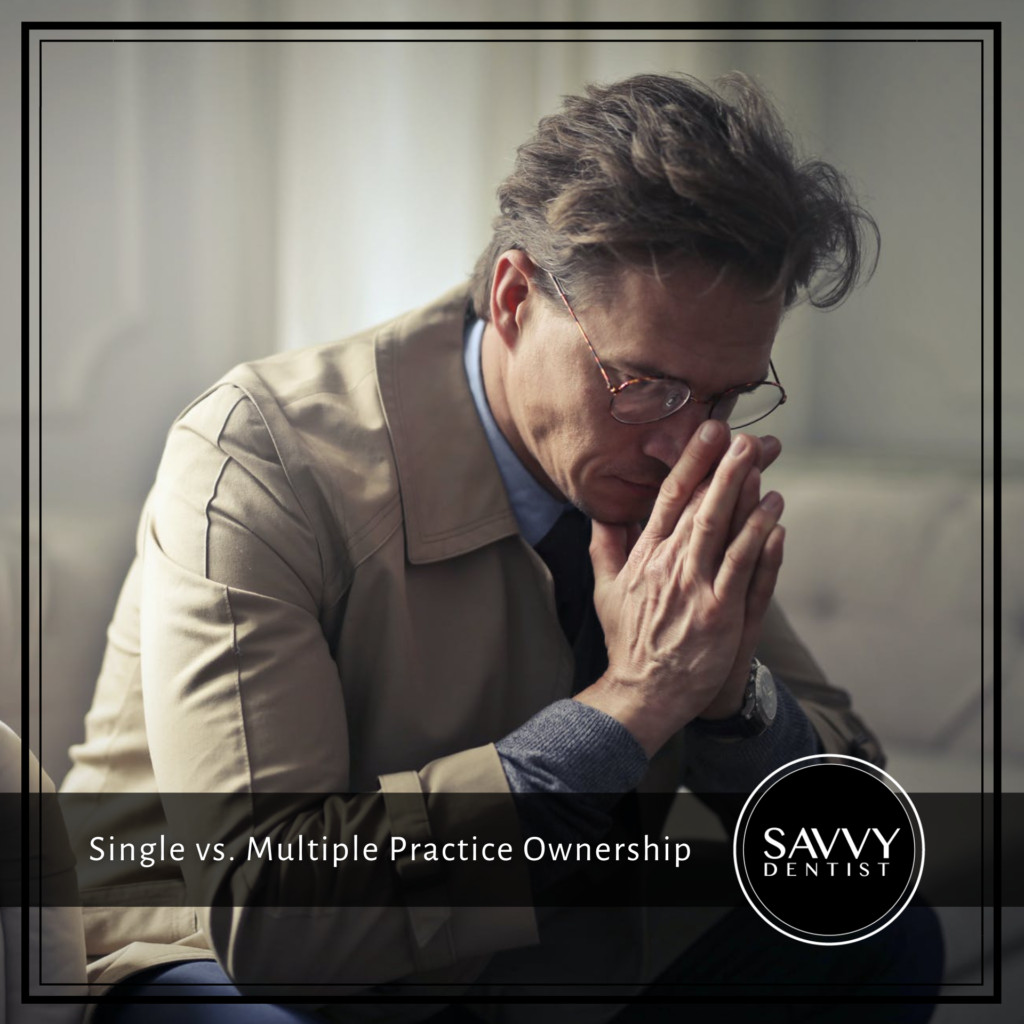It’s a topic that many people have strong views on – single versus multiple practice ownership. Of course, there’s no definitively right or wrong answer here, but there are several things you should consider if it’s a route you’re looking to take.
We often talk about the three fundamental currencies; money, time and meaning. You need money to do the things you want and need to do, you want to have enough time to enjoy your life, and you need that sense of meaning and purpose to feel fulfilled. So, it’s really about choosing a model that gives you more of each of those three currencies.
People often fall into the trap of owning multiple practices simply because they think that they should, or that’s the definition of success.
However, it’s also important to be aware that owning multiple practices doesn’t necessarily equate to owning multiple profitable practices.
The second biggest key is to choose a business model that will help you achieve that outcome in the simplest and safest way.
One of the things that I see all the time is that people take risks unnecessarily. And I’m all for taking considered risks, but we don’t want to take them if there’s no need to. And if you need to take a risk, make sure you’ve considered it and done everything in your power to mitigate it.
Single Practices
Some of the advantages of a single practice or a single site, is that it’s simpler and easier to have everything under one roof. You can still scale and create capacity under one roof, you can have a practice with six chairs, eight chairs, nine chairs, 10 chairs – however many chairs.
Most people can achieve pretty much all their goals under one roof. Now, that’s not going to be true for every single person, but for most people I would say most people’s goals could be achieved with one practice. And that’s fine – as long as you have capacity there.
When it comes to this type of practice, in theory, it’s less risky because you’re not spreading your assets too thin. But a single practice can be risky if it’s set up in a really poor area. If you’ve got one practice and you’re set up in an uber competitive area that’s only becoming increasingly saturated, then there’s a level of risk around that.
Some of the disadvantages of single practice ownership, are you obviously have limited growth because once you hit capacity, you’ve hit a ceiling. You can try and do all sorts of fun things like expand your operating hours, get more out of the day and so on and so forth, but there comes a point where you can’t do any more.
Multiple Practices
When it comes to multiple practices, the big advantages there are you’ve got more capacity for leverage, more seats under management, more chairs under management. So, in theory, more revenue, greater leverage, which should give you more income, which should give you more time and so on and so forth.
The other advantage of multiple practices is, in theory, you can roll them up for big exit. Now, of course, the challenge with that though is you have a much smaller pool of buyers for such a big enterprise. But in any event, the potential for bigger exit is there.
When it comes to multiple practices, as I’ve alluded to, ensuring all your practices are profitable can be a real challenge. When you’ve got too many fixed costs across multiple locations and not enough leverage to be able to surpass those costs, it’s becomes really complicated. The more practices you have, the more complex situations become.
From observing people that manage multiple practices very well, I’ve noticed that they share the strong ability to build and lead high-performance teams. Their recruitment, onboarding, leadership. and their ability to get the best out of people is really crucial to juggling multiple practices.
They also have more sophisticated management structures and organizational structure. If you don’t have structure in multiple practices, that lack of structure will absolutely kill you. You’re going to need to have a key person in each location, and a manager that sits across the group of practices. So, you’ll need to have key person meetings with, obviously, the group manager and probably with the individual leaders on each site as well. This means your role might change from being clinical, to being the visionary and leader of this new structure.
As complexity increases, you need to have systems, processes, assets, and structures in place to support you. So, coming back to the very beginning of this, I would say it’s super, super important for you to know your outcome.
You need to think about what you want in terms of money, time, and meaning. Once you know what you’re aiming for, you can choose a model that’s going to get you there in the simplest way possible with the least amount of complexity.
Again, there’s no right answer, and there are plenty of ways to get to the top of the mountain. But you’ve just got to choose the right way for you.



